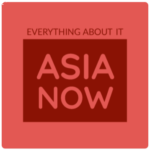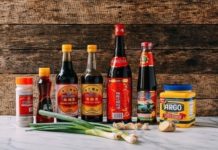Vietnam has a rich and diverse fashion scene that reflects its culture and history. Traditional Vietnamese fashion is characterized by elegant and flowing garments made from silk, cotton, and other natural fibers.
The Ao Dai is the most iconic traditional Vietnamese garment, a long tunic that is worn over loose-fitting trousers. The Ao Dai is known for its elegant and feminine silhouette, with a fitted bodice and flowing skirt that drapes gracefully to the floor. It is often worn on formal occasions such as weddings and special events.
- The Ao Dai is a traditional Vietnamese garment that is considered the national dress of Vietnam. It is worn by both men and women, although the female version is more commonly seen.
- The Ao Dai typically consists of a long, fitted tunic that is worn over loose-fitting trousers. The tunic is often made from silk or other lightweight materials and can be embroidered or decorated with intricate patterns and designs.
- The Ao Dai has a long and rich history in Vietnamese culture, with records of its use dating back to the 18th century. It was originally worn by courtiers and aristocrats, but over time it became more popular among the general population and is now worn for a variety of occasions.
- In modern times, the Ao Dai has become a symbol of Vietnamese national identity and is often worn by officials, students, and professionals for formal events and ceremonies. It is also a popular choice for brides and bridesmaids at Vietnamese weddings.
- While the basic design of the Ao Dai has remained relatively unchanged over the centuries, there have been many variations and adaptations to suit modern tastes and styles. Today, the Ao Dai is a versatile and iconic garment that represents the beauty and elegance of Vietnamese culture.
In recent years, Vietnam’s fashion industry has undergone rapid growth and development, with a rising number of young and talented designers emerging onto the scene. Vietnam’s fashion industry is known for its innovative designs and use of sustainable and eco-friendly materials.
- Vietnam’s fashion industry has experienced rapid expansion and is now becoming an important player in the global fashion scene. The country’s designers are increasingly gaining recognition for their innovative designs, use of sustainable materials, and focus on traditional Vietnamese techniques.
- Vietnam’s fashion industry has been growing at a rapid pace, with a number of young and talented designers emerging onto the scene. Many of these designers draw on Vietnam’s rich cultural heritage, incorporating traditional elements and techniques into their modern designs.
- Vietnam’s fashion industry is also known for its focus on sustainability and eco-friendliness. Many designers are using natural, organic, and recycled materials in their creations, and are adopting environmentally-friendly practices in their production processes.
- The Vietnamese government has also supported the fashion industry, providing funding and resources to help young designers and fashion entrepreneurs get started. The country’s fashion industry is now a significant contributor to the national economy, with an increasing number of fashion events and shows being held in Vietnam each year.
- Overall, Vietnam’s fashion industry is poised for continued growth and success, driven by a combination of creativity, innovation, and a commitment to sustainability.
Vietnamese street fashion is also becoming increasingly popular, with a growing trend towards more casual and streetwear-inspired clothing. Popular Vietnamese street fashion styles include graphic t-shirts, denim jackets, and oversized sweaters.
- Vietnamese street fashion is a rapidly growing trend, especially among young people who are looking for more casual and comfortable styles. Streetwear-inspired clothing is becoming increasingly popular in Vietnam, with many young designers creating their own unique takes on classic streetwear designs.
- Graphic t-shirts are one of the most popular items of clothing in Vietnamese street fashion, often featuring bold and colorful designs that reflect popular culture or local trends. Denim jackets are also a popular choice, worn over t-shirts or hoodies for a comfortable yet stylish look.
- Oversized sweaters and hoodies are also a common sight in Vietnamese street fashion, especially during the cooler months of the year. These items are often paired with ripped jeans or joggers for a relaxed and casual look.
- Sneakers are another important element of Vietnamese street fashion, with many young people investing in high-quality sneakers as a way to express their individuality and sense of style. Many Vietnamese streetwear brands have emerged in recent years, catering to the growing demand for casual and comfortable clothing that is both stylish and affordable.
- Overall, Vietnamese street fashion is a vibrant and dynamic scene, with a growing number of young people expressing their creativity and sense of style through their clothing choices.
Vietnamese fashion designers are gaining international recognition, with many showcasing their collections at fashion events and shows around the world. The future looks bright for Vietnam’s fashion industry, with its unique blend of traditional and modern styles, and a commitment to sustainability and innovation.
- Vietnamese fashion designers are increasingly gaining recognition on the global stage, thanks to their innovative designs, creativity, and commitment to sustainability. In recent years, a growing number of Vietnamese designers have showcased their collections at major international fashion events and shows, including Paris Fashion Week, New York Fashion Week, and London Fashion Week.
- Vietnamese designers are known for their unique blend of traditional and modern styles, often drawing on Vietnam’s rich cultural heritage to create modern and elegant designs. They are also recognized for their use of sustainable and eco-friendly materials, and for their focus on ethical production processes.
- Thanks to a supportive government, a thriving community of young designers, and a growing global demand for sustainable and ethically-produced fashion, Vietnam’s fashion industry is poised for continued growth and success. The country’s fashion industry is already an important contributor to the national economy and is expected to grow and develop in the coming years. With its unique blend of traditional and modern styles and a focus on sustainability and innovation, Vietnam’s fashion industry is set to become a significant player on the global fashion stage.




